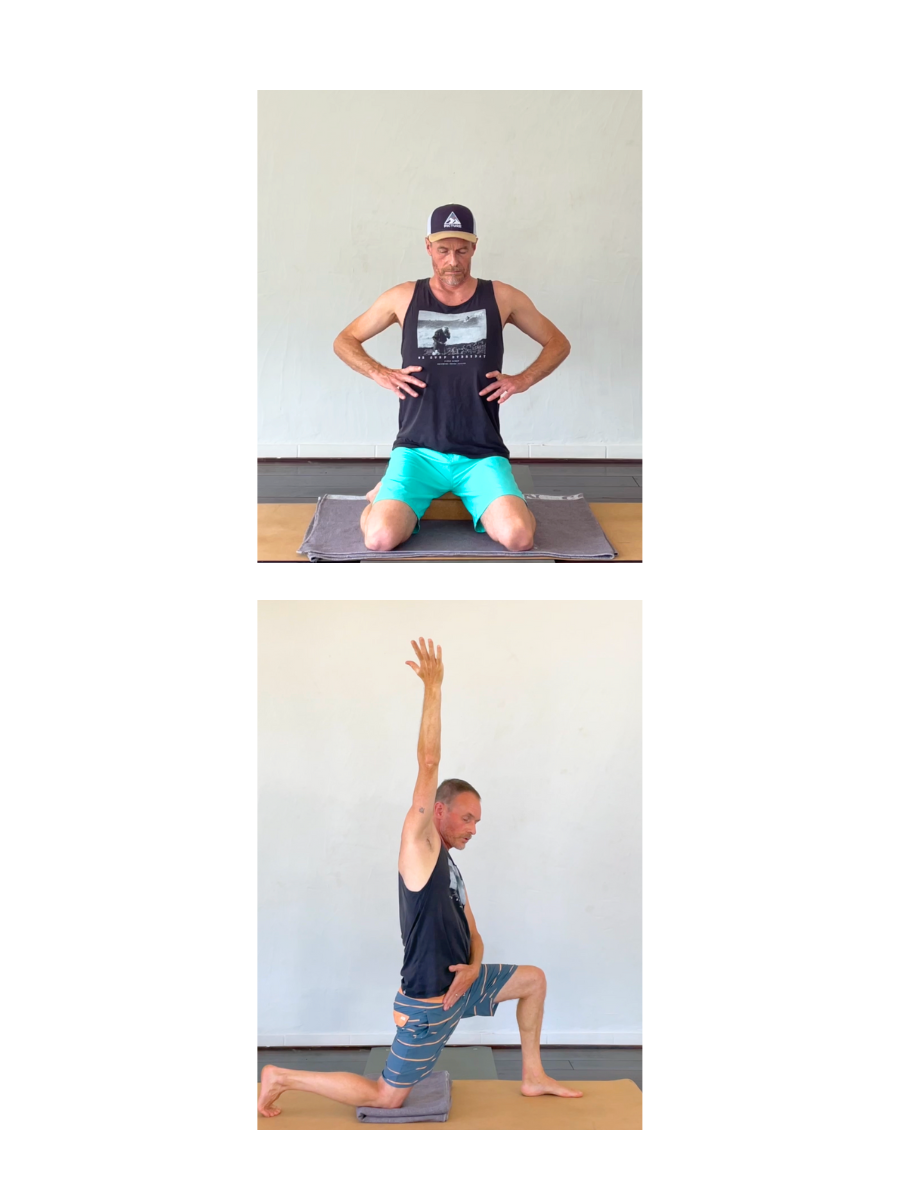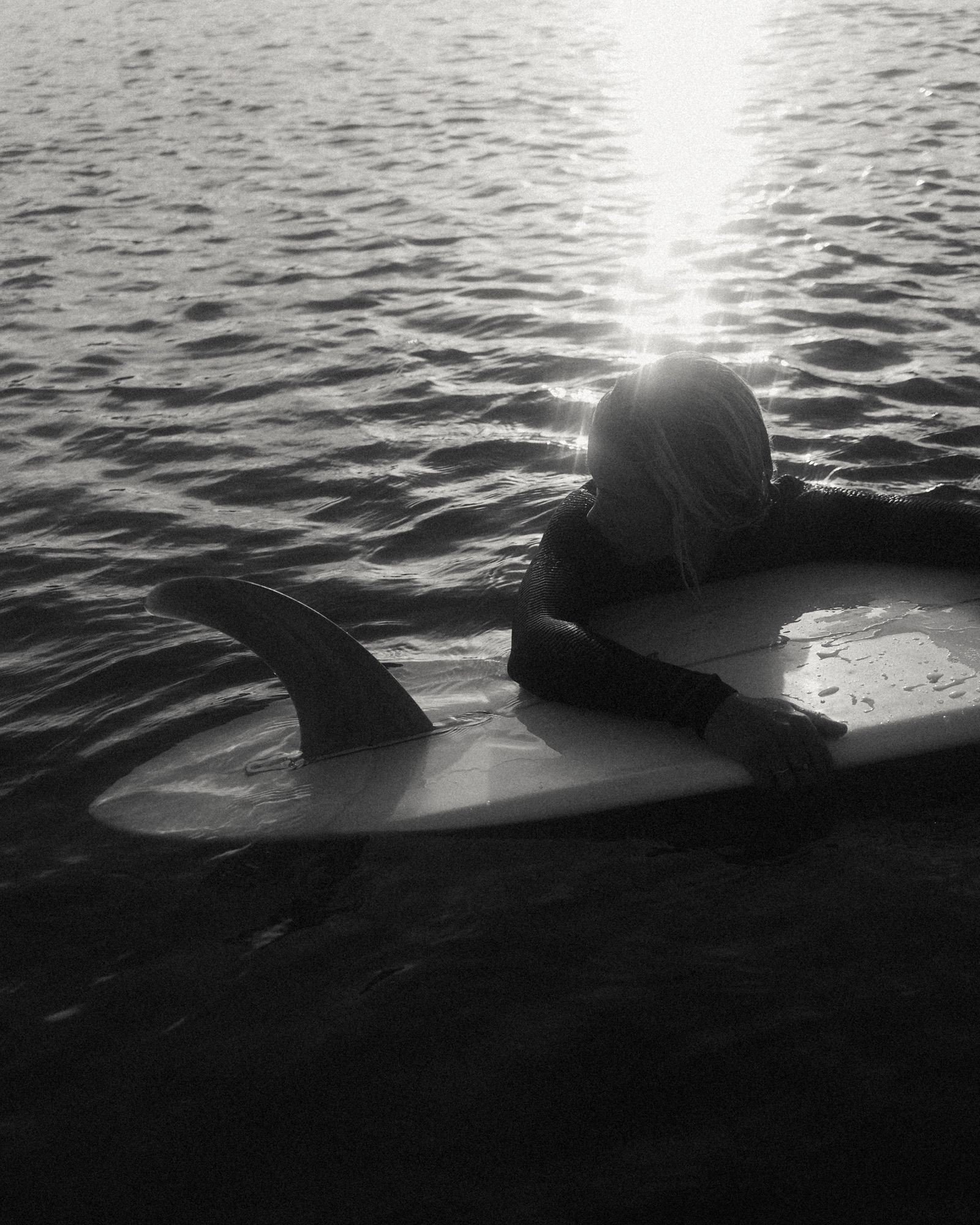Functional Breathing: How to Use the Breath in Surfing, Training & Daily Life.
5-6 min Read // Last update: August 4th, 2025.
The breath has a unique power. It’s automatic, yet we can control it. It's invisible, yet it shapes how we feel, move, and perform. And in recent decades, breathing has gained renewed attention — thanks to pioneers like Wim Hof, James Nestor (author of Breath), and Patrick McKeown (The Oxygen Advantage).
I personally began exploring breathwork deeply in 2005 when I started practicing yoga. At first, it was the breathing techniques in Vinyasa classes that fascinated me (Ujaii breathing for example). They were both energizing and calming. Later, when I couldn’t continue my physical practice for a while, I turned to Pranayama - specific breathing patterns practiced in stillness. I heard the phrase: "The breath is the bridge to the subconscious." Over time, I began to understand what that really meant. I also learned: "The breath is a tiger you are trying to tame."
Breathwork is a powerful tool that needs to be used with proper guidance. I was lucky to learn from the best. Some very experienced teachers who passed on their knowledge in a smart yet humble way. This lead me to never stop doing it. The effects are subtle at first, but over time, they’re transformational.
By now I have practised the same, simple pranayama techniques on a daily basis for almost 20 years - building slow & steady so it is safe and enjoyable. The benefits of this 5-10 minutes practice are absolutely mind-blowing!
Based on years of study and hands-on experience — both in yoga and more scientific approaches — here’s how I use the breath in three key areas: Exercise, Surfing, and Daily life.

Breathing During Exercise, Workouts and Stretching.
In any kind of training—strength, conditioning, endurance—I aim to breathe exclusively through the nose for as much / long as possible. This principle is central to The Oxygen Advantage method.
Why nasal breathing?
It helps condition the body to tolerate CO₂ better.
It triggers the Bohr effect, making it easier for oxygen to be released from the blood into your muscles.
It mimics the benefits of altitude training, improving endurance and performance.
If you are doing a HIIT workout this obvisously doesn´t apply - at some point you will have to breathe through your mouth. But in all other situations.. try it out and be amazed how quickly the body can adapt and how much longer it takes until you get out of breath.
When lifting weights - how to breathe?
Exhale & Brace your core with your spine in it´s natural / neutral curve.
Inhale as you lower the weight (when you bend your knees in a squat for example).
Exhale while lifting or exerting force.
Proper Bracing is essential for stability and spine protection—whether in the gym or lifting something in daily life. Learn the bracing technique here.
When Stretching - how to use the breath?
Once you gained some awareness of your breath, how the diaphragm moves your belly (when the belly is soft) and how it can move the ribcage and chest, then you can leverage breathing to improve your stretching & mobility work. You can send the breath into certain areas of tension and move the fascia, deepen a stretch.
Let´s say your are trying to open your hip flexors (front of the hip) in a lunging position: You can move the stretch upwards into the ribcage by lifting the arm and then sending your inhalations into that side of the ribcage. This way you not only lengthen the fascia with the physical position you are in but also from the inside by moving certain structure with your breathing. This is very effective and feels great too.
Relaxing the body in a stretch:
In any kind of passive stretch position where you don´t need much stability or strength I recommend to make your exhalation longer than the inhalation and exhale with an open mouth every once in a while. Inhale through the nose on a count of 3 with your belly being soft and exhalte through the mouth on a count of 6 or longer. This will encourage the nervous system to calm down which is essential if you want the body to relax.
Breathing short and rapid, mainly into the chest on the other side, will be counterproductive! It will cause stress in the system, inviting the sympathetic (fight/flight/freez) part of the nervous system to get activated which will lead your brain to not send a message into the body to relax the tissues.

Breathing while Surfing.
1. Paddling & Positioning. Try to breathe only through your nose while paddling or moving around in the lineup whenever you can. This avoids over-breathing and builds your body's resilience using the same principles mentioned above.
2. During Take-Off. The goal of the take-off is to move fluidly from prone into a functional surf stance. That stance should be stable and dynamic through the hips and legs and agile yet relaxed in the upper body.
A simple breathing tip here: Exhale as you bring your feet onto the board. That exhalation when you come to Position 3 of the take-off can help release tension, making your upper body looser and your mind calmer. This sets the tone for better decision-making as you scan the wave, pick your line, and make the drop. Tension narrows your focus. Relaxation opens it up.
3. When You Feel Stressed or Overwhelmed. This happens to every surfer—whether in big waves, a crowded lineup, or just when trying to improve a specific move like the bottom turn. When you feel tension building:
Inhale slowly through the nose, allowing the belly to soften.
Exhale slowly through the mouth, longer than your inhale.
Repeat this for 3–5 breaths, or as long as needed. It’s one of the simplest ways to down-regulate your nervous system and get back into the flow. I do this a lot and it works magic.
Want to learn the basics of functional breathing and calming your system? Watch my short video here.
Breathing in Daily Life
Breathing through the nose instead of the mouth isn’t just for workouts or stress — it’s a 24/7 practice. Authors like Patrick McKeown and James Nestor have helped bring this message into the mainstream: Mouth breathing can lead to poor sleep, low energy, and even structural changes in the face over time.
A simple practice: Notice during your day—while working, walking, even resting—is your mouth open or closed? Unless you're talking or eating, it should be closed, with air flowing through the nose.
Upgrade Your Walks
You can improve endurance and cardiovascular fitness just by walking:
While walking uphill: keep your mouth closed. If you feel breathless, pause, but don’t gasp through the mouth. Instead, slow the breath through the nose until you recover.
On flat ground: after a normal exhale, hold the breath for a few seconds, as soon as you feel a mild desire to inhale, resume calm nasal breathing. This creates a slight air hunger and trains your CO₂ tolerance.
These techniques use the Bohr effect to help your body deliver oxygen more efficiently to your tissues—even under stress.
Breathing is free, always available, and incredibly powerful. Whether you're in the water, on the mat, in the gym, or just walking the dog — how you breathe changes how you feel, move, and think.
Want to explore this more? 👉 Start with my Functional Breathing Video here.
